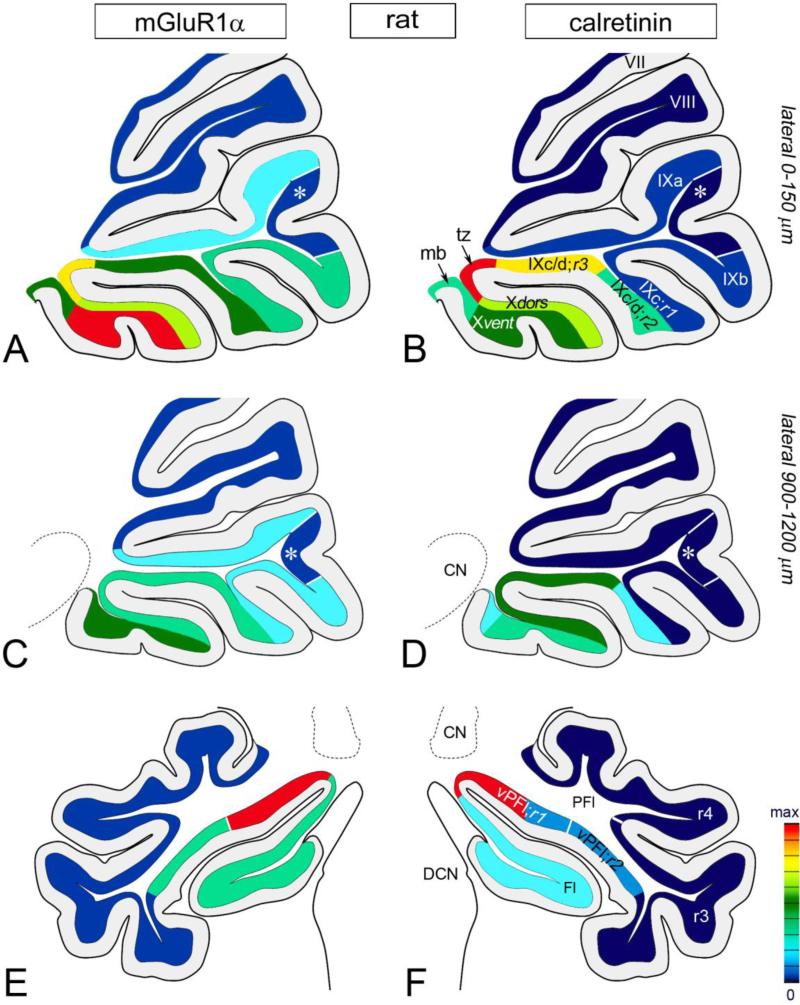Fig. 8.
A gradient map of UBC subclass distribution in rat cerebellum. The red colored areas represent regions with the highest density (max) of either mGluR1α+ UBCs (a, c, e) or CR+ UBCs (b, d, f). The deep blue colored areas contain hardly any UBCs. a-d Nodulus, uvula and VIII in parasagittal plane. The highest UBC densities for mGluR1α and CR are detected in the midline sections (a, b). In the lateral sections (c, d) the UBC densities show a marked decrease, especially in nodulus. Differences in the distribution between the two UBC subclasses are apparent. While every lobule contain mGluR1α+ UBCs (a, c), albeit with different densities, the CR+ UBCs (b, d) are restricted to nodulus and IXc/d;r2&3. The areas with the highest mGluR1α+ UBC and CR+ UBC densities area the Xvent (a) and the tz IX to X, respectively. Asterisk marks a sparse mGluR1α+/CR+ UBC area between IXa and IXb. e, f Fl and PFL in coronal plane. Both UBC subclasses are present in high density in the vPFl;r1. The mGluR1α+ UBC are more widespread in PFl than the CR+ UBCs (compare e to f). For numerical data of UBC densities see Supplementary Tables 2 and 3.

